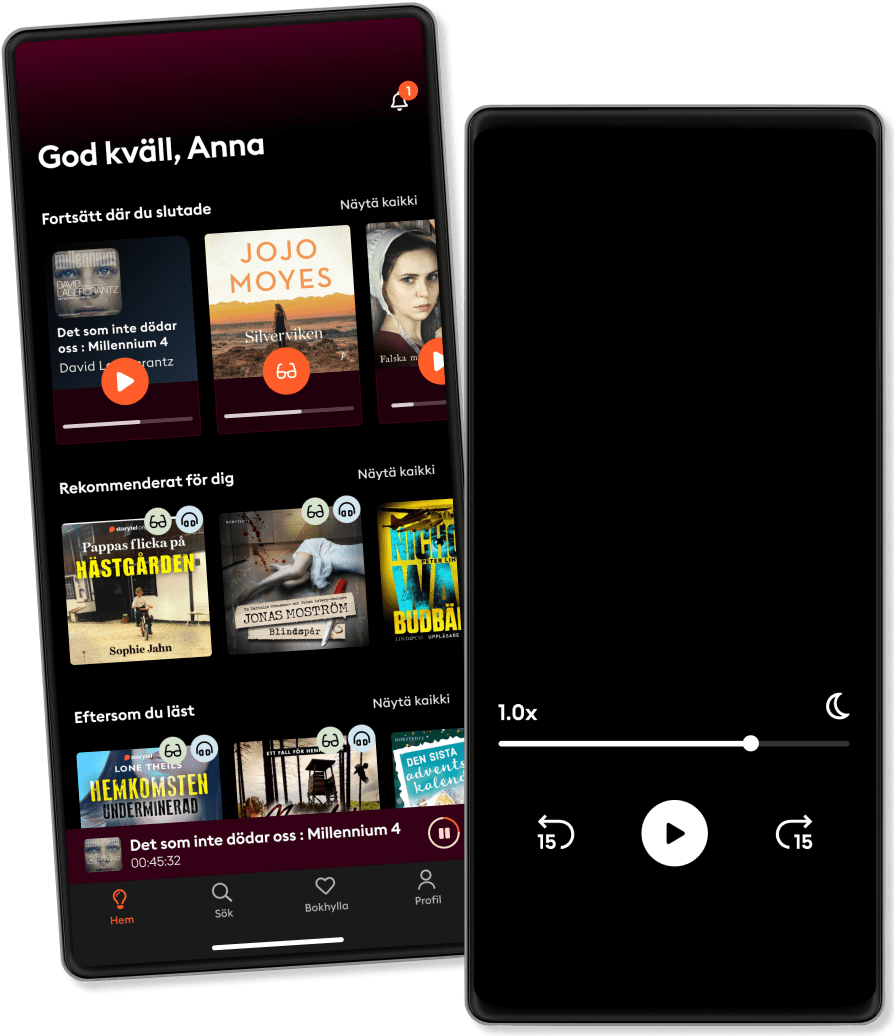Listen and read
Step into an infinite world of stories
- Read and listen as much as you want
- Over 1 million titles
- Exclusive titles + Storytel Originals
- 7 days free trial, then €9.99/month
- Easy to cancel anytime

Cognitive Behavioral Therapy
- By
- With:
- Publisher
- Duration
- 3H 15min
- Language
- English
- Format
- Category
Non-fiction
The aim of cognitive behavioral therapy is not to treat an individual with a specific illness, but to look at the person and determine what can be improved. There are various protocols for providing cognitive behavioral therapy, with significant similarities between these. Use of the word CBT may apply to multiple treatments, including' self-instruction (e.g., diversion, imagining, positive self-talk), calming or biofeedback, creation of adaptive coping methods (e.g., avoiding unpleasant or self-defeating thoughts), modifying maladaptive attitudes regarding discomfort, and setting goals.' Treatment sometimes is manualized, with unique technique-driven, simple, precise, and time-limited interventions for a particular psychological disorder. CBT is used in individual as well as social environments, and the methods are often tailored for self-help. Many physicians and scholars are cognitively focused (for example, cognitive restructuring). Still, others are more behaviorally responsive (for example, in vivo exposure therapy). Interventions like imaginary exposure therapy combine these two approaches. In this book you’ll learn:
Therapies that help with anxiety and depression
Signs of depression to become more aware of yourself
Develop some coping strategies and skills to deal with issues that could be invitation to depression proactively.
Develop the antidepression skills that would people around you, such as family members and friends, to enable them cope more effectively with the patient’s depression
To develop relapse prevention plan that could be useful in preventing future episodes of depression hence lessening its effects.
© 2020 Richard Kroon (Audiobook): 9781664946644
Release date
Audiobook: October 24, 2020
Tags
Others also enjoyed ...
- Why Has Nobody Told Me This Before? Julie Smith
- DBT For Dummies Blaise Aguirre, MD
- The Gift of Therapy: An Open Letter to a New Generation of Therapists and Their Patients Irvin Yalom
- Emotional Success: The Motivational Power of Gratitude, Compassion and Pride David DeSteno
- Self-Compassion: The Proven Power of Being Kind to Yourself Kristin Neff
- Momma and the Meaning of Life: Tales of Psychotherapy Irvin D. Yalom
- Finding Flow: The Psychology of Engagement with Everyday Life Sean Pratt
- The Ultimate Introduction to NLP: How to build a successful life Owen Fitzpatrick
- Self-Esteem: A Proven Program of Cognitive Techniques for Assessing, Improving, and Maintaining Your Self-Esteem Matthew McKay
- The Art of Being Erich Fromm
- Fourth Wing (1 of 2) [Dramatized Adaptation]: The Empyrean 1 Rebecca Yarros
4.7
- Fourth Wing (2 of 2) [Dramatized Adaptation]: The Empyrean 1 Rebecca Yarros
4.8
- A Court of Thorns and Roses (1 of 2) [Dramatized Adaptation]: A Court of Thorns and Roses 1 Sarah J. Maas
4.3
- Harry Potter and the Philosopher's Stone J.K. Rowling
4.7
- Fourth Wing Rebecca Yarros
4.6
- From Blood and Ash (1 of 2) [Dramatized Adaptation]: Blood and Ash 1 Jennifer L. Armentrout
4.3
- Ruthless Fae [Dramatized Adaptation]: Zodiac Academy 2 Susanne Valenti
4.4
- The Awakening [Dramatized Adaptation]: Zodiac Academy 1 Susanne Valenti
4
- From Blood and Ash (2 of 2) [Dramatized Adaptation]: Blood and Ash 1 Jennifer L. Armentrout
4.4
- Summary of Atomic Habits by James Clear Best Self Audio
4.3
- House of Earth and Blood (1 of 2) [Dramatized Adaptation]: Crescent City 1 Sarah J. Maas
4.4
- A Court of Frost and Starlight [Dramatized Adaptation]: A Court of Thorns and Roses 3.1 Sarah J. Maas
4
- The Pumpkin Spice Café Laurie Gilmore
3.3
- How to Talk to Anybody About Anything J.H. Marsh
3.2
- A Court of Thorns and Roses Sarah J. Maas
4.2
This is why you’ll love Storytel
Listen and read without limits
800 000+ stories in 40 languages
Kids Mode (child-safe environment)
Cancel anytime
Unlimited
Listen and read as much as you want
1 account
Unlimited Access
Offline Mode
Kids Mode
Cancel anytime
English
International